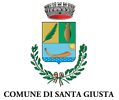A JOURNEY THROUGH ROMANESQUE
Piedmont itinerary
The mountain range of Monte Pisano snakes at the borders with the region of Lucca.
In the Middle Ages, these rises emerged like an island from the surrounding wetlands. The road surrounding them, raised above the ground level, allowed to access the area even when it was most subjected to turn into a marshland.
As confirmed by Strabo, a Greek geographer, this territory was known since the Roman age for the richness of its resources: water, wood and construction stones. Quarries offered various qualities of materials, employed to build Pisan medieval edifices, either civil and religious.
Therefore, small architectural jewels of Romanesque architecture rose across the mountainside, dotting the road that skirts the mountain range on the Pisan side, between Ripafratta and Vicopisano: pievi, abbeys and small subordinate churches built between the 11th and the 14th centuries by highly skilled workers, who imported building techniques and decorating repertoires from the construction of Pisa cathedral.
Itinerary map
![]() Accommodation711|715|712|716|713|714 [6]
Accommodation711|715|712|716|713|714 [6]
![]() Art and culture590|591|592 [3]
Art and culture590|591|592 [3]
![]() Handicrafts and typical products763|767|764|768|765|766 [6]
Handicrafts and typical products763|767|764|768|765|766 [6]
![]() Cultural centres1095|1096|1097 [3]
Cultural centres1095|1096|1097 [3]
![]() Cinemas and theatres563|564|565 [3]
Cinemas and theatres563|564|565 [3]
![]() Nature and wellness459|460 [2]
Nature and wellness459|460 [2]
![]() Restaurants1142|1146|1143|1147|1144|1145 [6]
Restaurants1142|1146|1143|1147|1144|1145 [6]
![]() Leisure605|606 [2]
Leisure605|606 [2]
























